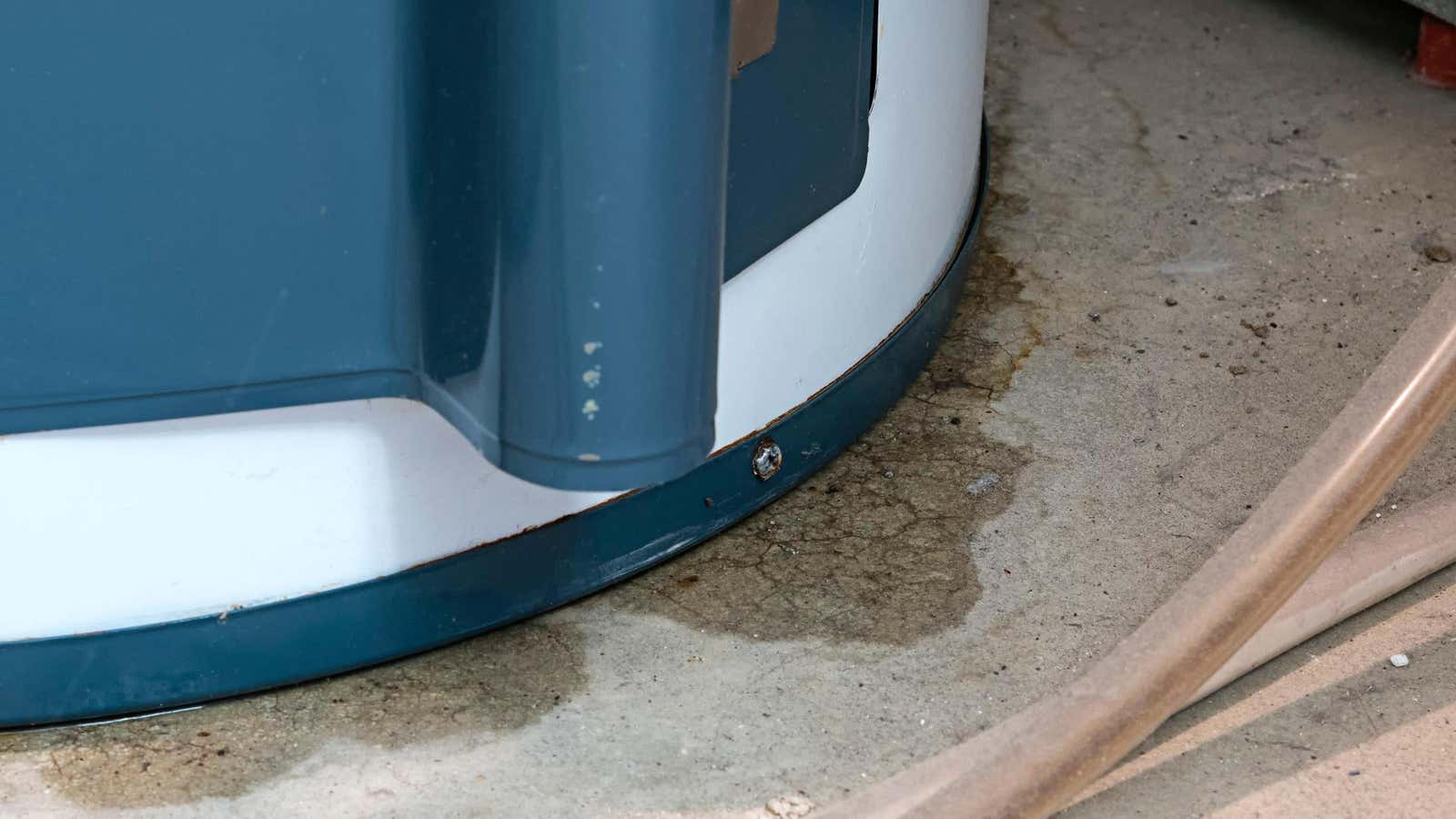Your Old Water Heater Is Probably Leaking

Water heaters are one of those household appliances that are usually forgotten about until something goes wrong. It’s easy to skip years, maybe even a decade or two, without paying much attention to it. But if you have a traditional water heater (rather than one of the newer tankless models ) and it gets old, don’t be surprised if/when it starts to leak.
There are several reasons why water may be dripping (or dripping) from your water heater. Here’s how to determine where the leak is coming from and what to do next.
How long do water heaters last?
Part of the appeal of tankless water heaters is that they typically last at least 20 years. On the other hand, traditional tank-type water heaters typically last between eight and 12 years , depending on how they are maintained and the mineral content of the local water.
Why is my water heater leaking?
Here are the three most common causes of water heater leaks and how to (potentially) fix them:
drain valve
If water is leaking from the bottom of the hot water tank, check the drain valve first. It is located at the bottom of the appliance and looks like a fitting to which you connect the hose from the outside. You should be able to tell by looking at the area around the valve if it is responsible for the leak. You can double check by rubbing a cotton swab or similar inside the valve hole to see if it’s damp.
Solution : If the drain valve is the source of the leak, first check if the knob or handle is tightly closed. If it doesn’t, it could be the cause of the leak.
The drain valve may also be defective and should be replaced. If you don’t know what you’re doing, this is a job for professionals.
Temperature and pressure relief valve
A temperature and pressure relief valve (commonly referred to as a “T&P valve”) is a safety device that relieves excess pressure from a tank. The valve itself is usually located on the top or side of the water heater with a thin tube (metal or plastic) attached to it, pointing down towards the ground. Check if the leak looks like it’s coming from that pipe and use the cotton swab again to determine if the inside of the pipe is wet.
The Fix : T&P valves are not something to play around with, so if this seems like the source of your leak, call in a professional to assess the situation. If necessary, they can replace the valve and/or pipe.
Inner tank
Unfortunately, the appliance’s internal tank is the most common source of leaks, especially given the age of the water heater.
Technically, homeowners should flush their water heater at least once a year to remove any mineral deposits and sediment that have built up in the tank . If this is not done for a long period of time (or ever), the sediment that settles on the bottom of the tank can corrode or crack the tank body, causing it to leak.
If you can safely remove the front panel of the water heater, shine a flashlight inside and look for signs of corrosion such as rust or moisture. You can even see the leak itself.
The Fix : If it’s pretty obvious your internal tank is the cause of the leak, start calling for an estimate: you’ll need a new one. If you are unable to open the front panel or are still unsure of the source of the leak, call a technician for an assessment. They will let you know if the water heater can be fixed or if you need a replacement.